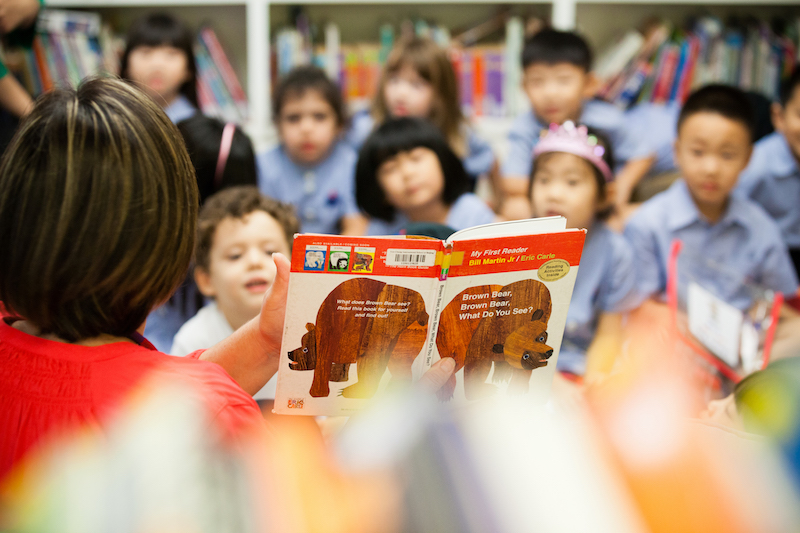The importance of reading in early language acquisition
Posted on 1st Feb 2018 in School News, China, Learning Styles
For more than 20 years, Yew Chung International School of Beijing has built the reputation of being the top international school in Beijing for bilingual learning.
Through its unique Co-Leadership and Co-Teaching models, the bilingual curriculum at YCIS Beijing encourages students to become bicultural, global citizens, in addition to speaking both English and Chinese languages.
To highlight this unique programme, parents were recently invited to campus to join in a panel discussion with expert educators in order to share tips and techniques for helping students on their bilingual journeys.
One of the many topics discussed by the panel was the opportunities and strategies of early years second language acquisition. Yet for those parents who weren’t able to attend the panel discussion, Early Childhood Education (ECE) Coordinator Maryanne Harper shares more details about early years language acquisition and how parents can support their young children at home during this important stage of their development.
A Growing Community
At YCIS Beijing, the ECE Programme has been growing at an exceptional pace in recent years, so much so that it’s expanding to offer additional classes beginning next August. Two of the reasons for the sustained growth and popularity of the programme is the unique co-teaching model implemented in all ECE homeroom classes, as well as the innovative ECE Learning Community.
Story Time Tips
But within these two unique learning frameworks, one of the activities that best support children’s bilingual development is reading, conversation and storytelling. Through the introduction of new vocabulary, matching pictures with words to develop meaning and pronunciation, and through creative and abstract reflection, reading with children is one of the most powerful ways to encourage and support language development.
Reading is also an activity that parents can do at home with their children. Regardless of the language in which the book is written, there are certain techniques that parents can use during story time in order to best promote their children’s language development.
Before Reading the Story: Before even opening the book, first, ask your children to predict what the story will be about. Based on the title and cover art, can children guess what will happen inside the pages?
While Reading the Story: Focus on new vocabulary. Ask them to match the pictures to the words and to practice correct pronunciation. Additionally, dressing up and acting out the stories is also fun for children. It provides them with a fun and engaging way to enhance story time, as they bring the characters and language to life.
After Reading the Story: Once the story is finished, ask children to retell it in their own words. What was the story about? Also, ask children their reactions to and feelings about the story.
Just one book has endless possibilities to extend language development in both a child’s mother tongue and also new languages. They are an active way to play with and practice words and phrases and to encourage interactions with peers and adults.
Reading together is a calm and reassuring activity for any part of the day. In sharing stories at home with your children, parents too will be amazed at how much joy and learning takes place.